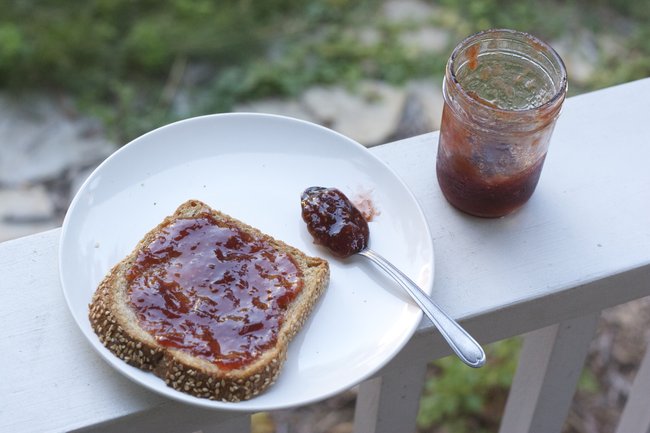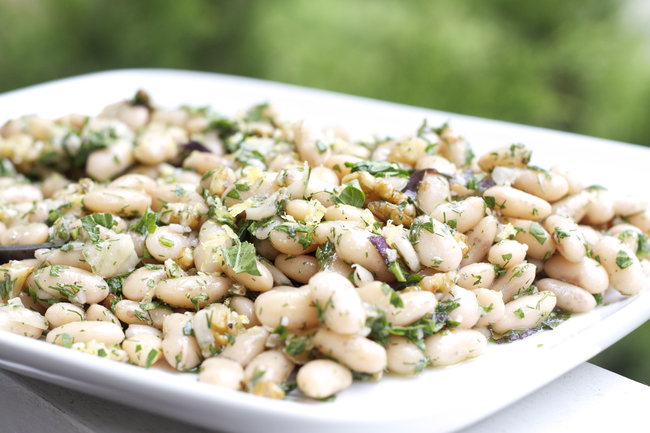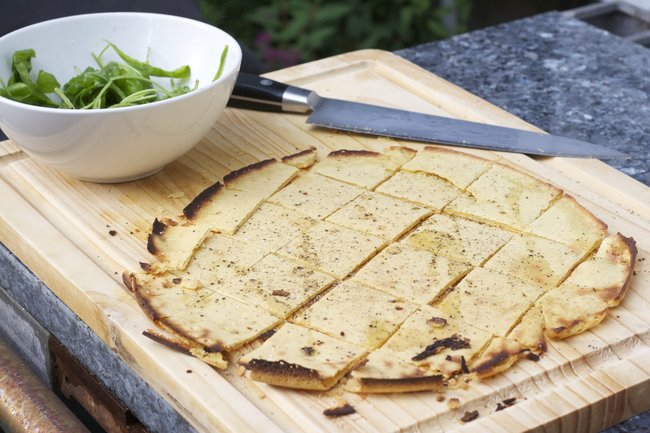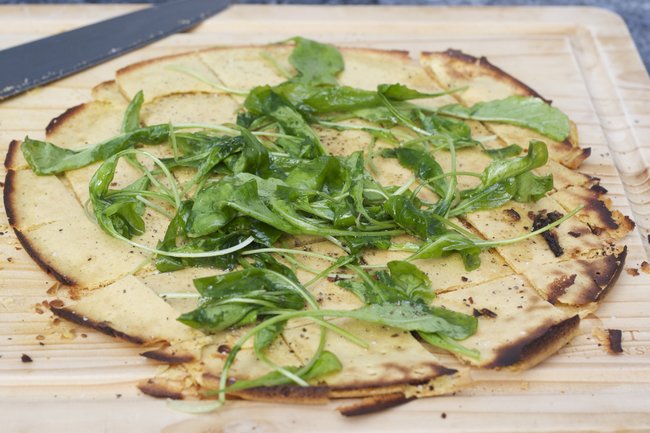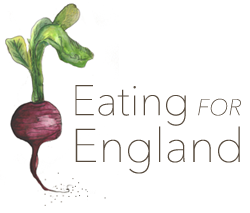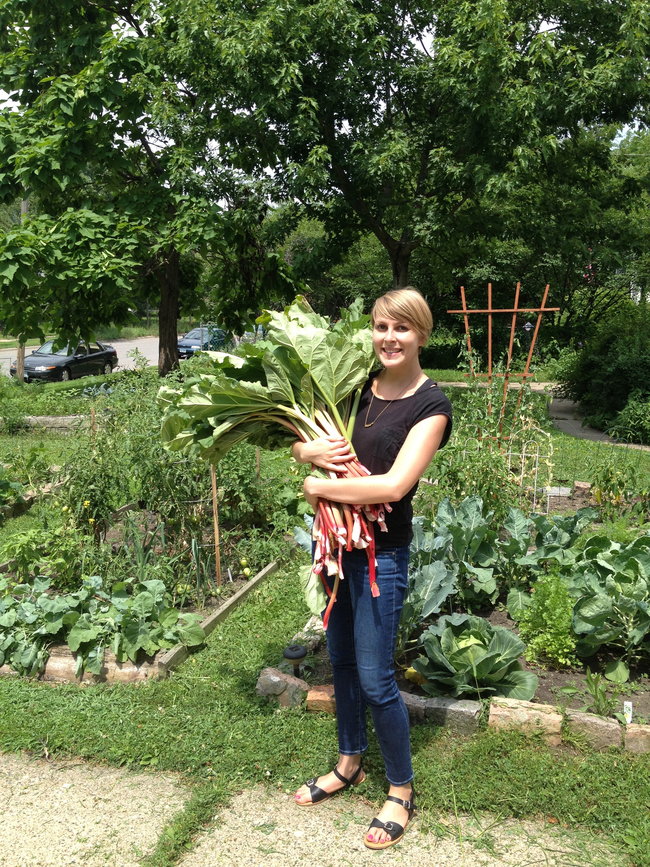
Hello! That’s me, looking all excited and a bit smug about the nine pounds of rhubarb I’m hugging to my chest. We had a bit of a jam-making extravaganza last weekend. That lush garden you can see behind me has nothing to do with me though. Sadly, I can claim no responsibility. It’s my friend’s garden and I know – it’s hard not to be envious of it if you don’t have one of your own.
We had plans to deal with the mega amount of rhubarb still going strong over there so a few of us decided to make enough jam to feed a small army. We tripled the recipe you see below and used 9 pounds of rhubarb. So, I’m essentially carrying a chubby newborn’s worth of rhubarb in that photo. Aren’t I a natural?
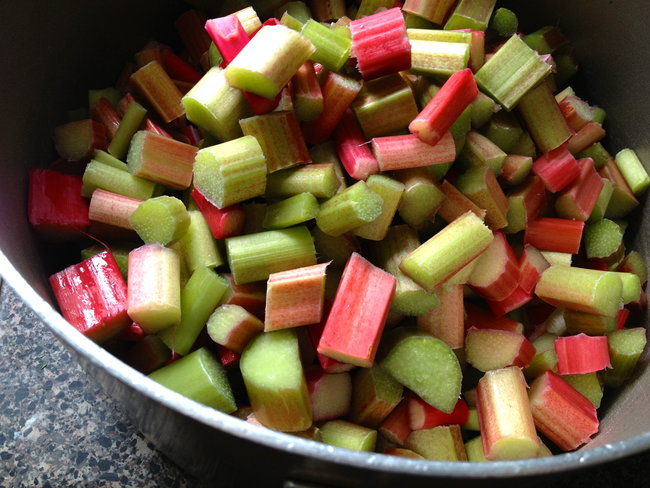
Since we’re in the midst of berry season we added berries to balance out the rhubarb’s tartness. I’ve mentioned before that despite rhubarb and strawberry being the classic American pairing, I much prefer a rhubarb-raspberry combo. As David Lebovitz puts it, raspberries are a bit more assertive and I like that bold flavour so much more than the super-sweetness of strawberries. You could also use a mix of black and red currants, raspberries, blackberries, and strawberries, if you like.
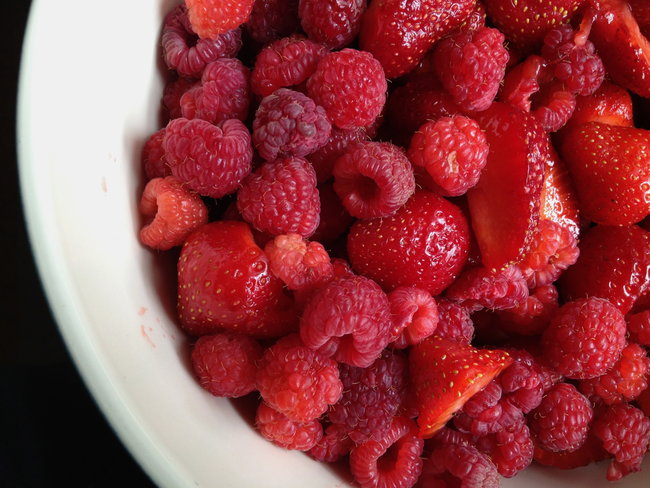
We ended up doing a mix of strawberries and raspberries with a heavy bias toward the raspberries and that was some good business. Dan proclaimed it delicious immediately and was raving about its flavour. It’s lovely on thick slices of toasted wholewheat bread and it makes a great “pb & j” alongside the deep nuttiness of almond butter. I’ve been eating more toast than is really reasonable for one person because of it. It’s tastes like sweet summer goodness at its simplest and finest.
Rhubarb and Berry Jam
adapted from David Lebovitz
Ingredients
- 3 pounds (1.25kg) rhubarb, trimmed and sliced into 1/2-inch (2cm) pieces
- 2 cups (250g) packed fresh raspberries (or other berries of your choice)
- 1 cup (250ml) water
- 5 1/2 cups (1kg, plus 100g) sugar
- juice of one lemon
- pinch of salt
Directions
- In a large pot, mix the rhubarb, berries and the water. Cook, covered, stirring frequently over moderate heat, until the rhubarb is cooked through and thoroughly tender. It should take about 15 minutes. Put a small plate in the freezer.
- Add the sugar, lemon juice, and salt, and cook uncovered until the jam is thick and passes the wrinkle test.
- The wrinkle test: place a small spoonful of jam on the frozen plate. Return it to the freezer and check it a few minutes later; if the jam wrinkles when nudged, it’s done. You can also use a candy thermometer; jam jells at approximately 220F (104C).
- Ladle the jam into clean jars, cover, and store in the refrigerator (it will last several weeks if kept in a tight-lidded container) or can them. We found simple instructions here. Makes 5 one cup (250ml) jars.
